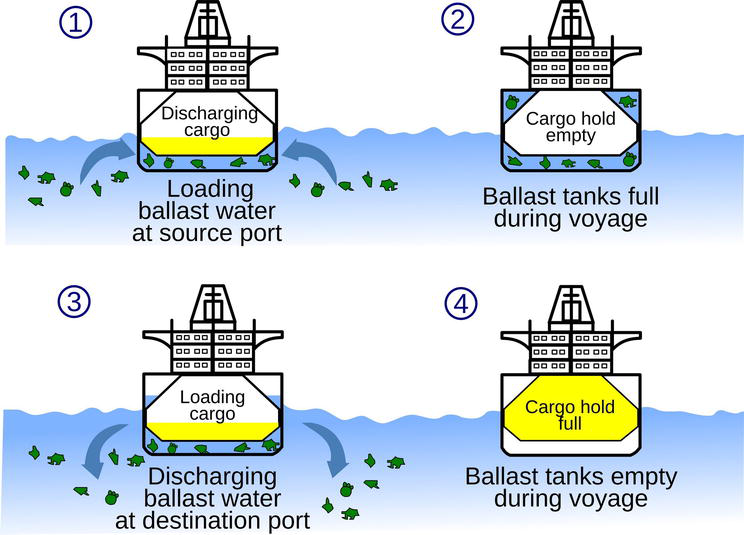Heavy weight, often sea water, which gives a ship stability and improves
handling when she is at sea. This may replace the cargo when the ship is not
loaded or may be pumped in during a voyage to replace fuel and water consumed.
Such a ship is said to be steaming in ballast or ballasting. A ballast
tank is a general term given to any tank or compartment in a ship which is
used for ballast when the ship is not carrying cargo.
Reasons for a ship having to steam in ballast include:
(a) no further cargo being available at the port where the ship discharged her
previous cargo. Typically this happens in the case of tramp ships which
are not on fixed schedules and are looking for further employment;
(b) in some trades, a ship may perform a series of voyages between two ports,
very often on time charter or contract of affreightment, with a (suitable)
cargo available in one direction only. This situation applies particularly in
certain bulk trades where the ships are specialised and only suited to one
type of cargo;
(c) in other instances, it may be more economical, after discharging a cargo,
to steam empty to another port to pick up the next cargo than to take
cargo which pays a low freight to that port.
(d) allowing the ship to pass under a bridge or quay loading/unloading
equipment.
That part of a ship’s voyage during which she is not carrying a cargo is known
as a ballast leg. It is useful for a shipowner or ship operator, when doing a
voyage estimate, to separate ballast legs from parts of the voyage when the
ship is carrying a cargo, known as loaded legs, in order to evaluate the profitability
of the voyage and to assess requirements for bunkers, since a ship may
consume less when in ballast.
A ballast bonus is a sum of money paid by a time charterer to a shipowner
in recognition of the fact that the shipowner is unlikely to find a cargo near to
the place of redelivery of the ship at the end of the period of the charter and is
therefore obliged to ballast his ship elsewhere.
Ballast is also useful when it is important to keep the freeboard, that is, the
distance from the waterline to the deck line of the ship, at a fixed level when
loading. It is possible to achieve this by discharging ballast, or deballasting,
simultaneously with loading. This operation may be crucial, for example, in
the case of large bulk carriers which might be obliged to stop loading should
deballasting not keep up with the rate of loading of the cargo. Similarly, deballasting
can help keep the ramp of a roll- on roll- off ship at a fixed angle with
the shore.
One area of concern is the ecological impact of invasive marine species
carried in ballast. IMO’s Marine Environment Protection Committee developed
the International Convention for the Control and Management of Ships’
Ballast Water and Sediments (BWM) to address the issue.

